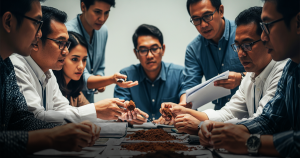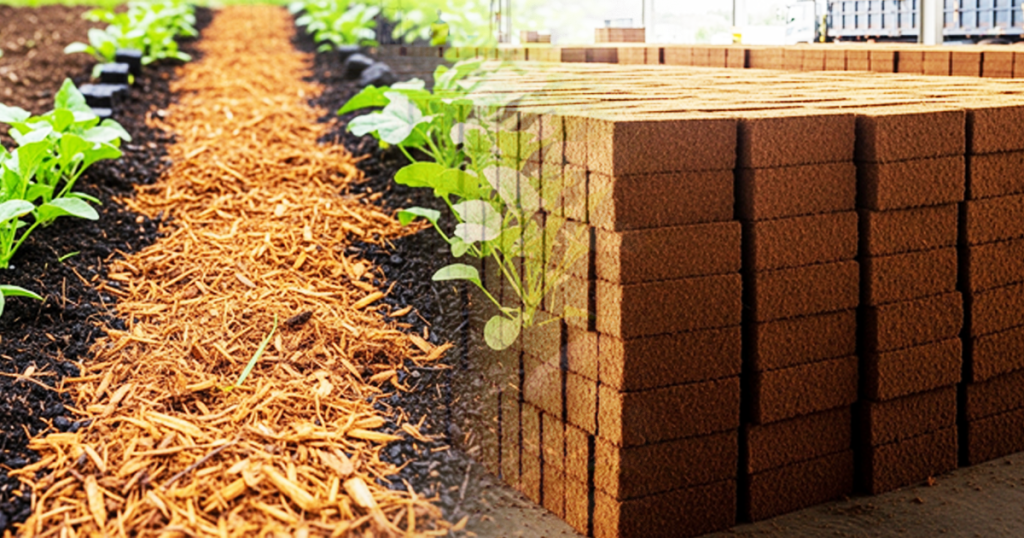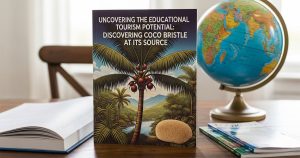A Researcher’s Lens on Tourism Potential
Standing in the middle of a bustling coconut fiber processing facility, I sensed an untapped potential. As a cocopeat researcher, I’ve long studied the agricultural and environmental benefits of coconut byproducts. However, it wasn’t until I immersed myself in the daily rhythms of coco bristle production that I realized something more profound.
These production sites are not only industrial spaces they are living classrooms. Here, sustainable practices, local knowledge, and innovation coexist, offering rich material for an emerging form of travel: educational tourism. It’s time we look beyond the fiber and see the experience.
What Is Coco Bristle and Why It Matters
Coco bristle, a natural fiber extracted from coconut husks, is globally valued. Commonly used in brushes, mats, and other household items, its production supports thousands of families across Southeast Asia, particularly in Indonesia and the Philippines.
Yet, despite its economic importance, the average consumer remains unaware of the process behind this sustainable product. The transformation from husk to fiber is meticulous, involving soaking, drying, and combing a craft passed down through generations.
This heritage, combined with growing interest in sustainability, makes coco bristle facilities a compelling destination for curious minds and eco-conscious travelers.
Educational Tourism Meets the Coconut Industry
A New Model of Learning Outside Classrooms
Educational tourism thrives where culture, science, and environment intersect. In the case of coco bristle, visitors gain direct insight into the lifecycle of a natural product from raw husk to final packaging. More than passive observation, these visits can include hands-on activities: husk separation, fiber drying, and traditional brushing methods.
Tourists, especially students and agricultural professionals, leave with a nuanced understanding of sustainable practices and renewable resource management. Unlike traditional tours, this model promotes knowledge transfer and ethical tourism.
Community Empowerment Through Tourism
Beyond education, these programs hold the potential to empower rural communities. When structured correctly, they create income opportunities, validate local expertise, and attract government or NGO attention.
Women and youth, often involved in fiber preparation and sorting, can become guides and facilitators, sharing their stories with pride. This shifts their role from unseen laborers to recognized educators and entrepreneurs. Educational tourism repositions the value chain not just in economic terms, but in cultural and intellectual ones as well.
The Sustainability Imperative in Tourism
Bridging Industry and Environmental Awareness
As environmental concerns dominate global agendas, travelers increasingly seek destinations that reflect their values. Coco bristle production exemplifies zero-waste principles: the husk is utilized, the water used in retting can be recycled, and the by-products often support composting initiatives.
Integrating this with tourism helps visitors witness sustainability in action. It transforms abstract concepts into tangible experiences, fostering deeper ecological consciousness and appreciation for natural materials.
Challenges and Standards for Implementation
Despite its promise, building a structured educational tourism model around coco bristle is not without challenges. Language barriers, safety protocols, and infrastructure must be addressed.
Moreover, authenticity must be preserved; it is vital that these sites do not become mere tourist performances but remain rooted in actual practice. Partnerships between researchers, local cooperatives, and travel organizers are key. By co-designing the experience, all stakeholders ensure accuracy, respect, and engagement.
A Researcher’s Vision for the Future
As a cocopeat researcher, I envision these visits not just as tours, but as research dissemination. Sharing findings in-situ, observing real-time practices, and receiving feedback from local workers offer a rare feedback loop in scientific inquiry.
The sites become living labs where science meets tradition. And for travelers, especially students and eco-entrepreneurs, the opportunity is transformative turning their understanding of agriculture, sustainability, and community into lived experience.
This approach could redefine rural tourism in developing countries. With minimal investment and thoughtful planning, these centers can attract local and international visitors. Educational materials, signage, and translation tools can enhance accessibility.
More importantly, it validates traditional ecological knowledge as something worth sharing, preserving, and promoting.








